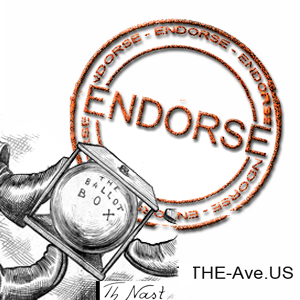
 “If not, there is no “Plan B,” and the Sound Transit board and planners will again have to go back to the drawing board.”
“If not, there is no “Plan B,” and the Sound Transit board and planners will again have to go back to the drawing board.”
Bill Bradburd:
Public transit in Seattle and the Puget Sound region has had a fitful history. November’s ballot initiative Prop 1, the $54B Sound Transit 3 (ST3) expansion is yet another chapter.
Using Forward Thrust as the starting point of this saga, voters in 1968 and 1970 rejected plans for an urban subway system that would have seen as much as 75% of the $1.3B price tag federally funded. A 60% vote was needed, which was hard to achieve during the severe “Boeing recession.” In 1972 voters approved an all-bus Metro system, then in 1990 as a result of the passage of the Growth Management Act, planning was authorized which led to the formation of Sound Transit.
The first Sound Transit ballot initiative in 1995, a $6.7B package that included at-grade light rail from Lynnwood to Tacoma and across I-90 to Overlake, along with bus and commuter rail was rejected, but a downscaled initiative passed in 1996. That package, called Sound Move, proposed a starter light rail line between Northgate and SeaTac and included more express bus services. It has resulted in the 14.6 mile Central Link line that runs between the UW Husky Stadium and Angle Lake (below SeaTac airport) today. Failed negotiations with potential contractors resulted in delays and management turnover, so Sound Move has cost nearly $5B and had overruns of over 86% more than originally projected.
A second stage for Sound Transit was proposed as part of a regional transportation ballot measure in 2007. The joint highways and transit measure (called the Regional Transportation Investment District, or RTID) was defeated, but the transit portion was brought back to voters in 2008 as Sound Transit 2 (ST2). That $17.8B measure was approved to expand Central Link north to Lynnwood, east to Bellevue and the Microsoft campus, and south to Federal Way. When built out in 2023, this expansion to the system will have added another 36 miles of light rail service.
Now with the original Sound Move’s final stations open (UW Husky stadium stop opening just this spring and Angle Lake and its 1,100 parking spaces last week) voters will decide this Fall whether to fund ST3, a $54B package that will add 62 more miles to the light rail system completing the original system vision mandated in Sound Transit’s state enabling legislation to connect Everett, Seattle, Tacoma and Bellevue with a spine of high capacity transit service.
In Seattle, there will be extensions through South Lake Union to Ballard (in 2035) and to the north end of West Seattle (in 2030). A new tunnel would be added through downtown Seattle and new light rail stations would be added at 130th Street and S. Graham Street (both in 2031). ST3 also adds Sounder commuter service, express bus and Bus Raid Transit services throughout the region.
Compared to other rail transit systems, the scale of the Sound Transit district is vast, covering King, Snohomish and Pierce Counties. King County alone is twice the area of the three counties of Portland’s Tri Met system. Connecting these sprawling distances with light rail – a high-capacity technology best suited for dense urban areas, not long distances – creates inefficiencies and compromises not found in traditional transit cities which use a hierarchy of urban, regional and intercity rail to provide capacities and stop spacing appropriate to urban, suburban and intercity travel.
The 60+ mile north-south spine between Everett and Tacoma was designed to mimic the freeway system. Stations will be close to the freeways, encouraging TOD hubs in pedestrian-unfriendly places. And while this will yield great development potential for housing developers and allow greater downtown Seattle density and growth, it will do little for reducing freeway and arterial congestion in the region.
Arguably, the determination to stay on course pursuing the vision of a 60+ mile light rail freeway spine has caused us to miss opportunities and respond to changed conditions.
For example, South Lake Union has been a targeted growth area for the City for decades, yet with all of the growth, SLU has half the transit mode share as downtown. Buildings there are fully parked, and housing costs in the surrounding neighborhoods have spiked because of poor regional transit access to all the new commercial development (and current plans continue to deemphasize housing in relation to jobs). In the meantime, the area remains heavily congested and rapid growth continues. Amazon’s new buildings alone will have nearly 3,000 parking spaces. Now, along Denny Way there are around a dozen permitted 40+ story buildings planned with no transit improvement in sight. ST3 won’t bring relief until light rail reaches there in 20 years.
Meanwhile, we have been slow to build the rail network needed within the dense urbanized area in Seattle and on the Eastside where buses have no way to avoid increasingly congested local streets.
We should be putting stations in areas where pedestrians want to be and get to (and other transit modes connect) – and serving not just commute trips downtown (as it does marginally well today), but non-commute trips to points throughout the city and beyond. That is, if we truly want to reduce our reliance on cars. ST3 will begin filling in an urban network with new lines to Ballard and West Seattle, but the network completed by 2035 will leave much of Seattle and the Eastside increasingly auto-dependent and mired in congestion.
$54B is a lot of money, and the size of the package may be too large for people to conceptualize. For perspective, Portland and Vancouver both constructed their urban rail networks for less than $5B, most of it federally or provincially funded.
ST3 would hit the average household with almost $400/year in additional taxes on top of those for previous Sound Transit financing (ST2 is about $200 per household).
For ST3 the $54B over the 25 years of construction is only the tip of the iceberg. $11B in bonds sold during this period will continue being paid to Wall Street investors for another couple of decades beyond the 25 years of ST3, and those payments are not included in the $54B cost. Further, the ST3 taxes are “indefinite”; there is no sunset date.
According to the Coalition for Effective Transportation Alternatives (CETA), by the time ST3 reaches Ballard, Seattle households will have paid as much as $20K in taxes toward the system. With Light Rail running from Everett to Tacoma and Seattle to Redmond, and a doubling of bus service, the percentage of people using transit only increases from 3.1% to 4.3%. Almost 90% of those transit riders will be on bus, not train. The question of value of the system remains open. CETA points out that Sound Transit admits that the cumulative system benefits do not exceed cumulative costs until 2071.
The big sell of ST3 is in full swing. The Mass Transit Now! campaign supporting ST3 is largely funded by labor and the firms designing and building the system along with large corporations that benefit most (e.g. Microsoft and Amazon). They have a lot at stake.
With the magnitude of costs at stake so high, one would hope for a robust debate about whether this is the best investment, whether the benefits could be achieved for less, and what the alternative uses for this much money could be. It’s worth asking whether the right tradeoff will be struck between capital investment for tomorrow vs. bus transit frequency today; and how far $54B would go towards meeting our education and social service needs, especially since ST3 will do little to address traffic congestion in the region or change car-dependent land uses in the suburbs.
Sadly, debate has been polarized and non-substantive, falsely framing ST3 as a panacea vs. the alternative of building more freeways or doing nothing at all. The Sound Transit board chose Tim Eyman to write the voter’s guide statement against ST3 rather than selecting organized groups like CETA or Smarter Transit. Detractors have effectively been marginalized.
Seattle and regional politicians have united in support, and have little interest in debating shortcomings or alternatives. Better to be “on board” rather than raise questions as Reuven Carlisle has about how we are financing ST3 and the possibility it will keep us from addressing other priorities.
But we’ll see whether the voters agree. Even though ST2 will not be completed for years, Sound Transit has set the vote for the presidential election cycle in the hope that a motivated and favorable electorate will support an aggressive investment. If not, there is no “Plan B,” and the Sound Transit board and planners will again have to go back to the drawing board.
Steve Schwartz and others chime in